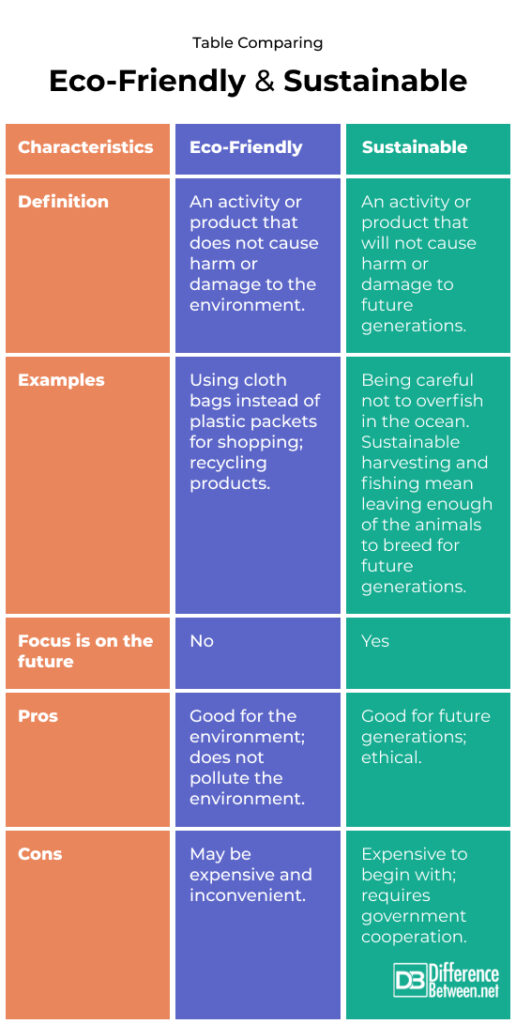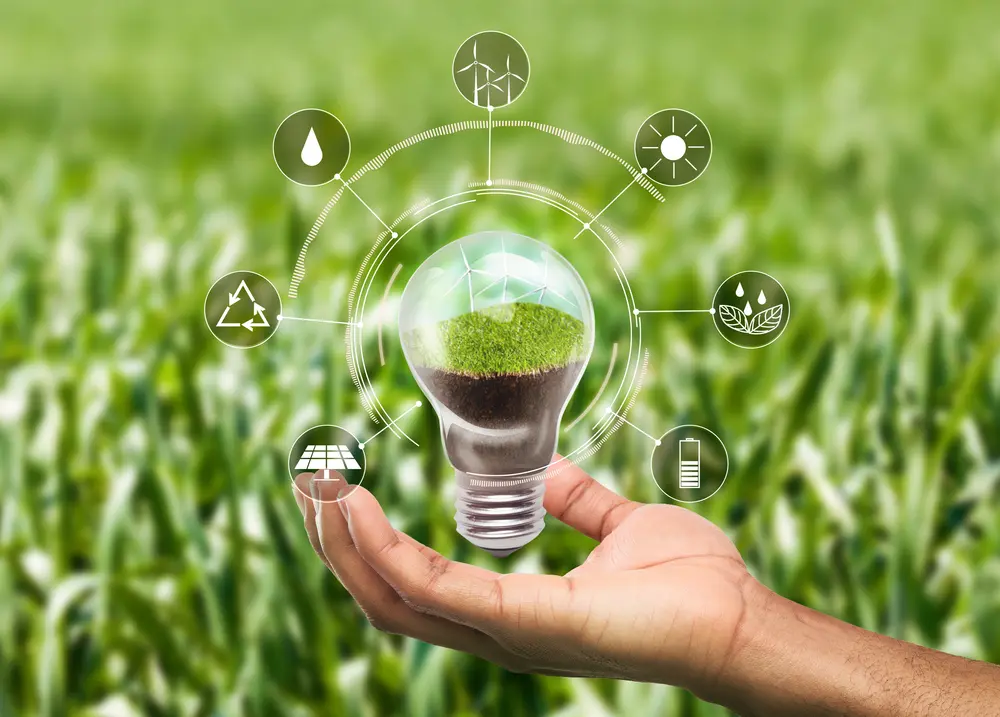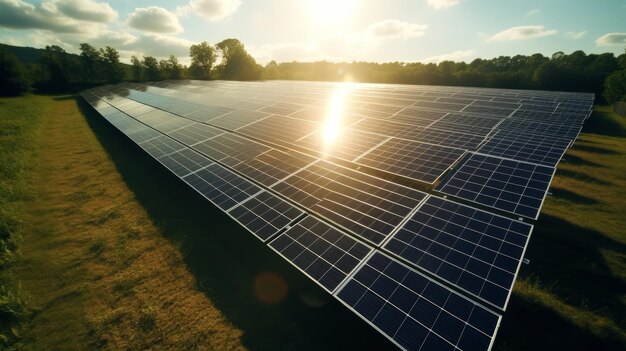
Eco-Friendly vs. Sustainable: What’s the Real Difference? (A Beginner’s Guide)
In today’s world, we hear a lot of buzzwords when it comes to protecting our planet: "green," "eco-friendly," "sustainable," "environmentally conscious." While these terms are often used interchangeably, they actually have distinct meanings. Understanding these differences isn’t just about semantics; it’s crucial for making genuinely impactful choices as consumers, businesses, and global citizens.
So, what’s the real scoop? Is that "eco-friendly" product truly helping the planet in the long run, or is it just a small step? Let’s break it down in simple terms.
Understanding "Eco-Friendly": The Immediate Steps
When something is described as "eco-friendly" (or "environmentally friendly"), it generally means that it does not harm the environment or, at the very least, causes less harm than traditional alternatives. Think of it as a product, practice, or service that has a reduced negative impact on the natural world.
Key Characteristics of "Eco-Friendly":
- Focus on Reduction: It aims to reduce pollution, waste, energy consumption, or the use of toxic materials.
- Specific Actions: It often points to a particular aspect of a product or process that is better for the environment.
- Immediate Impact: The benefits are often more immediate and directly observable.
- Reactive Approach: It tends to react to existing environmental problems by mitigating their effects.
Common Examples of "Eco-Friendly" Actions & Products:
- Recycling: Separating waste so materials can be reused.
- Using Reusable Bags: Reducing plastic waste from single-use bags.
- Turning Off Lights: Conserving electricity.
- Energy-Saving Light Bulbs (LEDs): Using less power than traditional bulbs.
- Composting Food Scraps: Reducing landfill waste and creating nutrient-rich soil.
- Driving a Fuel-Efficient Car: Emitting less CO2 than a gas-guzzler.
- Buying Products Made from Recycled Materials: Giving new life to old resources.
Why "Eco-Friendly" is Great (and Where it Falls Short):
- Pros:
- Easy Starting Point: Many eco-friendly actions are simple to adopt, making them great first steps for individuals and businesses.
- Visible Impact: The benefits (less waste, lower energy bills) are often clear.
- Raises Awareness: Helps people think about their environmental footprint.
- Cons/Limitations:
- Narrow Scope: It often focuses on one aspect of environmental impact without considering the whole picture (e.g., a recycled product might still be made in a factory with poor labor practices or rely on non-renewable energy).
- Doesn’t Address Root Causes: While it reduces harm, it doesn’t necessarily tackle the underlying systems that create the harm in the first place.
- Can Lead to "Greenwashing": Companies might label something "eco-friendly" based on a minor improvement, while the overall business model remains unsustainable.
Defining "Sustainable": The Holistic Long-Term View
"Sustainable" is a much broader and more complex concept than "eco-friendly." It’s not just about reducing harm; it’s about creating systems that can endure indefinitely without depleting resources, degrading the environment, or compromising the well-being of future generations.
The most widely accepted definition comes from the 1987 Brundtland Report, which defines sustainable development as: "development that meets the needs of the present without compromising the ability of future generations to meet their own needs."
To be truly sustainable, something must consider three interconnected pillars:
- Environmental Sustainability (Planet): Protecting natural resources, biodiversity, and ecosystems. This includes minimizing pollution, using renewable resources, and regenerating natural systems.
- Social Sustainability (People): Ensuring fair and equitable practices, promoting human rights, health, and well-being, and building strong, inclusive communities. This involves fair wages, safe working conditions, and access to education and healthcare.
- Economic Sustainability (Profit/Prosperity): Creating viable, long-term economic systems that support livelihoods and well-being without depleting natural capital or exploiting people. This means stable economies that don’t rely on endless growth at the expense of the environment or society.
This interconnected approach is often called the "Triple Bottom Line": People, Planet, and Profit.
Key Characteristics of "Sustainable":
- Holistic & Systemic: Considers the entire lifecycle of a product or process, from raw material extraction to disposal, including social and economic impacts.
- Long-Term Focus: Aims for solutions that last for generations, not just immediate improvements.
- Proactive & Regenerative: Seeks to not just reduce harm, but to restore and regenerate natural and social systems.
- Intergenerational Equity: Ensures that current actions don’t burden future generations.
Examples of "Sustainable" Actions & Products:
- Renewable Energy Systems (Solar/Wind Farms): Not just using less fossil fuel, but switching to energy sources that replenish naturally.
- Circular Economy Principles: Designing products to be reused, repaired, and recycled in a continuous loop, eliminating waste.
- Ethical Supply Chains: Ensuring fair labor practices, safe working conditions, and environmentally responsible sourcing from start to finish.
- Regenerative Agriculture: Farming practices that improve soil health, sequester carbon, and enhance biodiversity.
- Green Buildings (LEED Certified): Designed and constructed to minimize environmental impact and improve occupant health throughout their lifecycle.
- Local, Community-Supported Agriculture (CSA): Reducing food miles, supporting local economies, and often using sustainable farming methods.
Eco-Friendly vs. Sustainable: The Key Differences at a Glance
| Feature | Eco-Friendly | Sustainable |
|---|---|---|
| Scope | Narrow; focuses on one or a few environmental aspects. | Broad; considers environmental, social, and economic impacts (Triple Bottom Line). |
| Time Horizon | Short to medium-term; immediate impact. | Long-term; focuses on future generations and enduring systems. |
| Approach | Reactive; reduces negative impact/mitigates harm. | Proactive; creates enduring systems; often regenerative and restorative. |
| Goal | Less harm to the environment. | Holistic well-being; meeting needs now without compromising future needs. |
| Complexity | Relatively simple actions. | Complex; requires systemic thinking and often collaboration. |
| Analogy | Putting a bandage on a wound. | Building a healthy body that prevents future wounds. |
Why Does This Distinction Matter?
Understanding the difference between eco-friendly and sustainable is vital for several reasons:
- Informed Consumer Choices: It helps you look beyond superficial "green" claims and identify truly responsible products and companies. An "eco-friendly" product might be a good step, but a "sustainable" one aligns with a more profound commitment to the planet and people.
- Combating Greenwashing: Many companies use "eco-friendly" labels without genuine commitment. Knowing the deeper meaning of sustainability helps you spot misleading marketing.
- Driving Real Change: Focusing solely on eco-friendly solutions might make us feel good but won’t solve systemic problems like climate change or resource depletion. Sustainability pushes for fundamental shifts in how we live, produce, and consume.
- Policy and Business Strategy: Governments and businesses need to aim for sustainable policies and practices, not just eco-friendly ones, to create a resilient future.
- Future Generations: Ultimately, sustainability is about ensuring that the planet can continue to support life and provide resources for our children and grandchildren.
How You Can Be Both Eco-Friendly AND Sustainable
You don’t have to choose one over the other! Think of eco-friendly actions as stepping stones on the path toward a more sustainable lifestyle.
Here’s how you can embrace both:
-
Start Small (Eco-Friendly Actions):
- Carry a reusable water bottle and coffee cup.
- Unplug electronics when not in use.
- Walk, bike, or use public transport more often.
- Reduce your meat consumption.
- Recycle and compost diligently.
- Buy second-hand whenever possible.
-
Think Big (Sustainable Practices):
- Research Brands: Look into companies’ full supply chains, labor practices, and environmental commitments, not just one "green" feature. Are they committed to the Triple Bottom Line?
- Support Renewable Energy: Switch to a green energy provider if available, or advocate for renewable energy in your community.
- Reduce Overall Consumption: The most sustainable product is the one you don’t buy. Prioritize needs over wants.
- Advocate for Policy Change: Support policies that promote systemic sustainability (e.g., circular economy initiatives, renewable energy mandates, fair trade regulations).
- Invest Ethically: If you invest, look into sustainable and ethical investment funds.
- Educate Yourself and Others: Learn more about complex environmental and social issues.
Conclusion: Towards a Sustainable Future
While "eco-friendly" actions are valuable and necessary steps, they are often just a piece of the much larger puzzle of "sustainability." Eco-friendly is about doing less harm; sustainability is about doing good, holistically, for the long term.
By understanding this crucial difference, we can move beyond superficial green efforts and truly strive for a world where our actions meet the needs of the present without jeopardizing the ability of future generations to meet their own. Every small eco-friendly step contributes, but true progress lies in embracing the comprehensive, long-term vision of sustainability. Let’s work together to build a future that is not just a little "greener," but truly thriving and enduring for all.



Post Comment